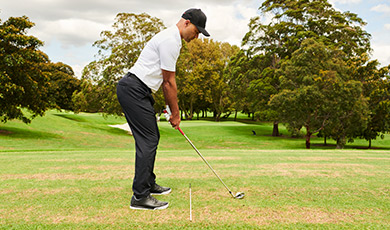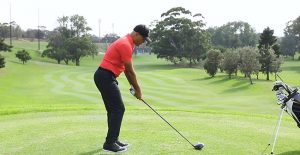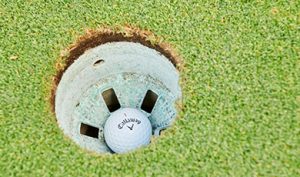A lot of my lessons recently have been centered around weight transfer and how to get the correct sequencing moving back and through.
I think if we can understand how the upper body and lower body work, both together and against each other, we can get a clearer idea on the whole weight transfer concept.
Below are a few examples of a ‘not-so-good’ swing compared to a better swing, with explanations on the positions. I hope you find them useful.
UPPER BODY
In the golf swing, the upper body provides most movement as this is ultimately what controls the golf club (through the hands right up to the shoulders). We create a turn going back through our left shoulder rotating against a supporting lower half. The hips should feel like they hardly move and really resist the turn going back.
There will always be a little movement from the hips and lower body, but they should not be leading the movement going back.
As the left shoulder gets to a point it cannot rotate any further, you are nearing the top of your backswing. If you feel pressure anywhere through your legs, it should feel like the in-step of your right foot is taking that pressure as well as the inside of the right leg. The common swing fault going back is a sway, where the lower body loses support and the weight generally shifts on to the outside of the right foot with a lot of lateral movement.

The swing on the left
- Sway is clearly visible
- Weight is on the outside of the right foot
- Belt buckle has moved quite a bit away from the golf ball
- Upper body has been allowed to turn too much
- Hands have moved closer to the right ear.

The swing on the right
- Very supportive lower half
- Upper body has coiled up nicely
- Upper body has been allowed to rotate in a more natural manner.

The swing on the left
- Support is lost from the lower body
- Right leg straightens
- Upper body over-rotates.
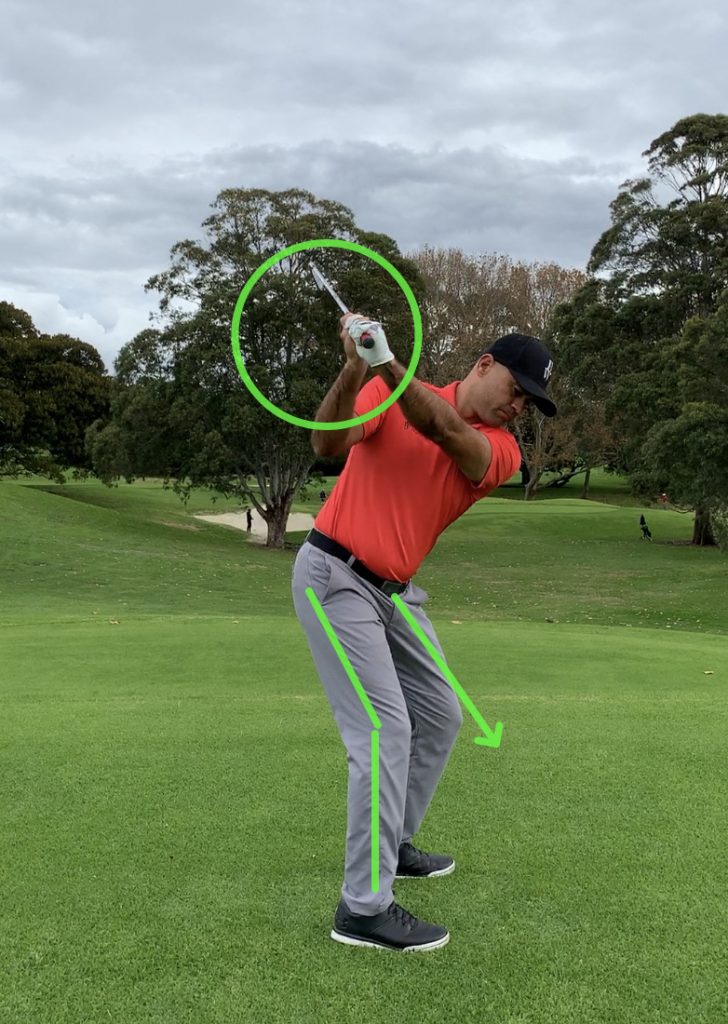
The swing on the right
- Lots of lower body stability
- Upper body has rotated but only as much as the lower half has allowed.
LOWER BODY
Once the upper body has created a nice full turn and the lower body has pretty much resisted the entire way, it is time for the downswing.
Even though the lower body does not create the speed in the downswing, it plays a very important role in creating room for the arms to create that speed.
Cue ‘separation’ …
WHAT IS SEPARATION?
Separation is the left hip initiating the downswing once the backswing has completed itself through the shoulder turn. This separation creates torque that has to be released later. This results in arm speed through the ball.
‘Separation’ between the lower body and upper body is the key in any sport where you use the hips to create arm speed — think tennis serve or baseball swing.

The swing on the left
- Support is lost from the lower body
- Right leg straightens
- Upper body over-rotates.

The swing on the right
- Lots of lower body stability
- Upper body has rotated but only as much as the lower half has allowed.
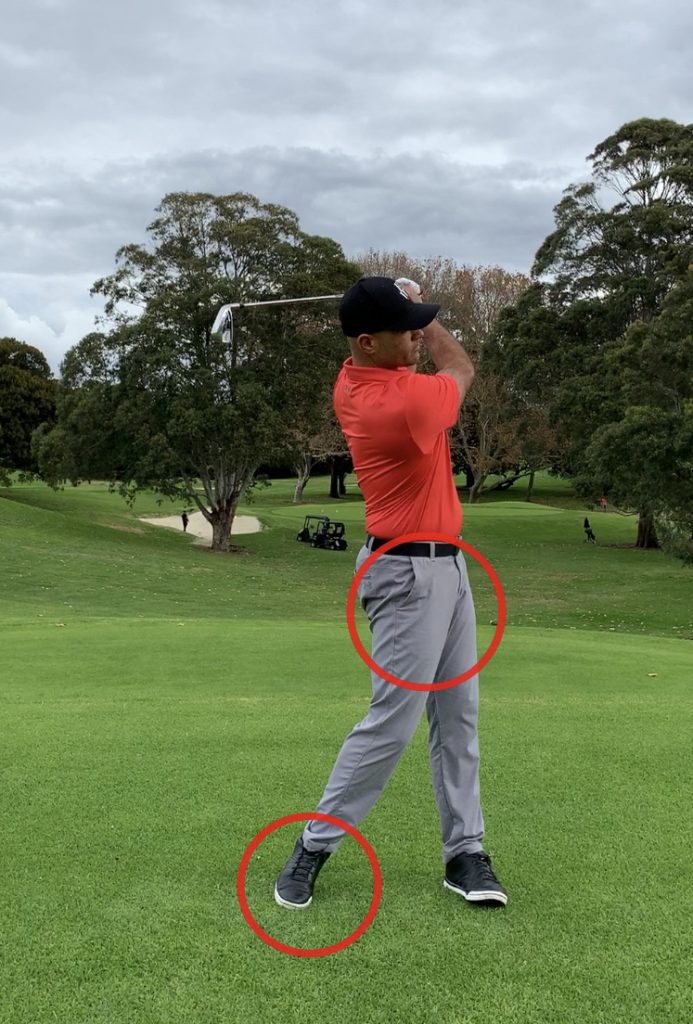
The swing on the left
- Distinct lack of rotation
- Unable to complete a balanced finish
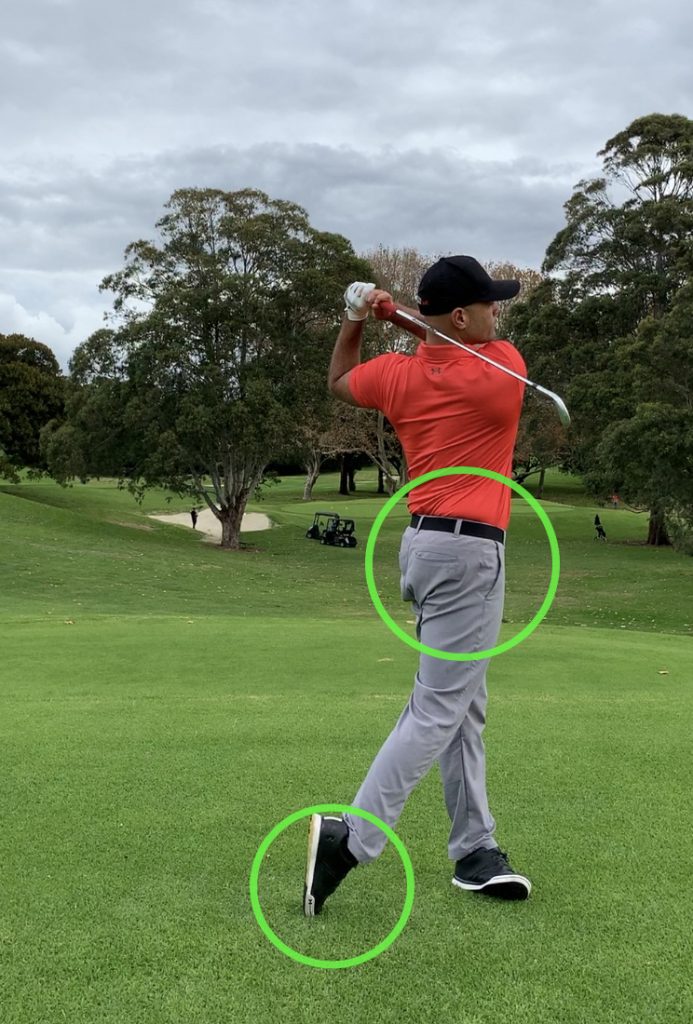
The swing on the right
- Rotation enables a nice balanced finish
- Everything naturally rotates
- Left side clears out of the way completely
- Majority of weight feels like it is on the heel of the left foot and the toe of the right foot planted on the ground.
PIECING EVERYTHING TOGETHER
To summarise, below are what I believe to be the correct movements with the upper and lower body during the golf swing:
- Setup – Lower body creates solid base whilst upper body is relatively relaxed and tilted at hips.
- Backswing – Left shoulder and upper body create coil whilst legs resist the turn, any lateral movement or lack of support leads to instability. Weight should be predominantly felt on in-step of right foot.
- Downswing and follow through – As left shoulder and upper body reach their final stretch, the left hip rotates towards the target. This move creates room for the arms to accelerate and generate clubhead speed.
- Finish position – Left hip, left shoulder clear out of the way. Weight felt on heel of left foot with right toe on the ground and right heel pointing behind.
Hopefully this gives you all more of an insight as to how the upper body and the lower body work during the swing.
BODY SCREENING
As a TPI Level 1 Coach, I am able to perform body screenings to see if you are able to get these parts of the body working together.
- Book in for a 1-hour lesson today and get screened for free – just tell the Pro Shop at time of booking that you would like the TPI screening
You will be redirected to the Sydney Golf Academy site. Simply choose your preferred lesson or package and select ‘Bobby Walia’ as your instructor at time of booking.
TPI does not believe in one way to swing a club, rather in an infinite number of swing styles. But, we do believe there is one efficient way for every player to swing and it is based on what the player can physically do.

